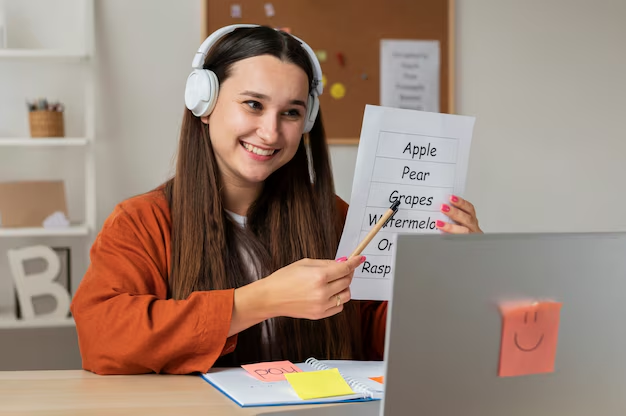Educational technology refers to the use of digital tools, resources, and technologies to facilitate and enhance teaching and learning. It involves a wide range of applications, from software and online platforms to interactive devices and multimedia resources. The integration of technology in education has revolutionized the way teachers teach and students learn, making education more accessible, engaging, and personalized.
In this article, we explore what educational technology is, its different types, and how it improves learning outcomes for students of all ages.
1. What Is Educational Technology?
Educational technology, also known as EdTech, is the use of technology to support and improve educational processes. This encompasses a broad spectrum of tools and methods that aim to enhance teaching and learning experiences. Educational technology can be used to create, manage, and distribute content, as well as to assess learning outcomes.
EdTech is not limited to hardware (like computers and tablets), but also includes software (learning management systems, educational apps, etc.), online platforms (MOOCs, e-learning platforms), and even virtual environments such as virtual reality (VR) and augmented reality (AR).
Key Components of Educational Technology:
- Hardware: Devices such as computers, laptops, tablets, and interactive whiteboards used in the classroom.
- Software: Applications, programs, and platforms that support learning, such as educational apps, simulation tools, and collaborative software.
- Online Resources: Web-based platforms offering courses, lectures, and learning modules, such as Coursera, edX, and Khan Academy.
- Multimedia: The use of videos, audio, animations, and interactive content to enhance the learning experience.
2. How Does Educational Technology Improve Learning?
Educational technology can significantly improve learning outcomes by making education more accessible, engaging, and efficient. Here are several ways in which it enhances learning:
Personalized Learning

One of the most powerful aspects of educational technology is its ability to cater to individual learning needs. Through adaptive learning technologies, students can receive customized learning experiences based on their strengths and weaknesses.
- Adaptive Learning Systems: These systems adjust the difficulty of content in real-time based on a student’s performance, providing a tailored learning path. Tools like DreamBox and Knewton are examples of adaptive platforms.
- Pacing and Flexibility: EdTech allows learners to progress at their own pace, which is particularly beneficial for students who need extra time to master concepts or those who wish to accelerate their learning.
Engagement and Interactivity
Technology fosters greater student engagement by making learning more interactive. Tools like interactive whiteboards, gamified learning platforms, and educational games encourage students to actively participate in lessons.
- Gamification: By incorporating game-like elements such as points, rewards, and levels into educational activities, EdTech platforms keep students motivated and engaged.
- Interactive Simulations: Virtual labs, simulations, and other interactive experiences allow students to explore concepts in a hands-on, immersive way, making abstract ideas more tangible and easier to understand.
Collaboration and Communication
Educational technology promotes collaboration among students and between students and teachers. With digital tools, learners can work together on projects, share resources, and communicate with peers and instructors in real-time.
- Collaboration Tools: Platforms like Google Classroom, Microsoft Teams, and Zoom provide spaces for students to collaborate, share ideas, and work on assignments together, even if they are geographically dispersed.
- Discussion Forums and Online Communities: Online discussion boards and social learning platforms encourage students to engage with peers, ask questions, and share knowledge, enhancing the overall learning experience.
Access to a Wide Range of Resources
Technology breaks down barriers to access, providing learners with resources that were previously unavailable. Whether it’s free online courses, e-books, or research databases, students now have vast amounts of information at their fingertips.
- Open Educational Resources (OER): Free resources such as textbooks, videos, and research papers can be accessed by students from anywhere, helping to reduce educational costs and providing a wider range of learning materials.
- Online Courses and MOOCs: Platforms like Coursera, edX, and Udacity offer courses from universities and institutions worldwide, enabling learners to take part in high-quality education regardless of their location or financial status.
Efficiency and Time Management
Educational technology helps streamline administrative tasks for educators and students, improving overall efficiency. Teachers can automate assessments, grade assignments, and track student progress with learning management systems (LMS) like Moodle and Canvas.
- Automated Assessments: Technology makes it easier for teachers to assess students’ work quickly and provide immediate feedback. This helps learners understand where they need to improve and allows instructors to address learning gaps sooner.
- Time-Saving Tools: By using digital tools for grading, attendance, and lesson planning, educators can save valuable time and focus more on interactive teaching methods.
Real-Time Feedback and Assessment
With educational technology, students can receive instant feedback on their work, enabling them to correct mistakes and improve performance continuously. This real-time feedback can be provided through quizzes, interactive assignments, and automated grading tools.
- Instant Feedback: Online quizzes and assessments provide immediate results, helping students learn from their mistakes and reinforcing correct answers.
- Data Analytics: Teachers can use data analytics tools to track student progress, identify patterns, and personalize instruction based on performance data, leading to better learning outcomes.
3. Examples of Educational Technology Tools
Here are some popular examples of educational technology tools that are transforming the learning landscape:
Learning Management Systems (LMS)
LMS platforms like Moodle, Canvas, and Blackboard allow teachers to organize and manage their courses, distribute content, track student progress, and communicate with learners in a streamlined way.
Educational Apps and Platforms
- Duolingo: A popular app for language learning that makes the process fun and engaging.
- Khan Academy: A platform offering free, interactive lessons on subjects like mathematics, science, history, and more.
- Quizlet: A study app that allows students to create flashcards and quizzes to reinforce learning.
Virtual and Augmented Reality
- Google Expeditions: An app that allows students to take virtual field trips to historical sites, outer space, or the deep sea.
- zSpace: A mixed-reality learning platform that provides interactive 3D simulations for subjects such as biology, chemistry, and physics.
4. Challenges of Educational Technology
While educational technology has numerous benefits, it also comes with its challenges, including:
- Digital Divide: Not all students have access to the necessary technology or reliable internet connections, leading to disparities in educational opportunities.
- Technology Overload: Excessive reliance on technology can overwhelm students and teachers. It’s essential to balance digital tools with traditional methods to ensure that technology enhances, rather than hinders, learning.
- Training and Support: Teachers may require training and support to effectively integrate technology into their classrooms. Professional development programs can help educators make the most of EdTech tools.
Conclusion
Educational technology has the potential to revolutionize learning by providing more personalized, engaging, and efficient educational experiences. By breaking down barriers to access, fostering collaboration, and enabling real-time feedback, EdTech empowers both students and teachers to achieve their educational goals. While challenges exist, the ongoing advancements in educational technology promise to make learning more inclusive, interactive, and accessible to learners worldwide.
FAQs
1. What are the benefits of educational technology?
Educational technology enhances learning by providing personalized experiences, improving engagement, offering access to resources, fostering collaboration, and making learning more efficient.
2. How can teachers use technology effectively in the classroom?
Teachers can use technology by integrating interactive tools, using educational apps and platforms, providing online resources, and leveraging data analytics to track student progress and personalize learning.
3. What is the digital divide in education?
The digital divide refers to the gap between students who have access to technology and the internet and those who do not. This gap can limit access to educational resources, hindering equitable learning opportunities.
4. Are there any disadvantages to using educational technology?
Challenges include the digital divide, technology overload, and the need for teacher training to effectively integrate EdTech tools into the curriculum.
5. How does EdTech improve collaboration among students?
EdTech tools, such as collaboration platforms and online discussion forums, allow students to work together, share resources, and communicate effectively, regardless of their physical location.


